Содержание
- 2. Outline Introduction Overview of Evaluation in Developed and Developing Countries Results-Based Monitoring and Evaluation (M&E) Approaches
- 3. Introduction: Importance of evaluation There are growing pressures in developing countries to improve performance of their
- 4. The Power of Measuring Results If you do not measure results, you cannot tell success from
- 5. Overview of Evaluation in Developed and Developing Countries
- 6. Evaluation in Developed Countries Most of the 32 OECD countries have mature M&E systems Earliest adopters
- 7. A Strong Evaluation Culture Exists when: Evaluation takes place in many policy domains Supply of evaluators
- 8. A Strong Evaluation Culture Exists when: (cont.) Institutional arrangements exist in government for conducting evaluations and
- 9. A Strong Evaluation Culture Exists when: (cont.) 7. An element of pluralism exists within each policy
- 10. Approaches Whole-of-Government Enclave Mixed
- 11. Whole-of-Government Approach Adopted in some early M&E pioneer countries Broad-based, comprehensive M&E at all levels of
- 12. Enclave Approach More limited, focus on one part or sector of government (a ministry or the
- 13. Mixed Approach Blended whole-of-government and enclave approaches Some areas have a comprehensive approach; others more sporadic
- 14. Evaluation in Developing Countries Face similar and different challenges Weak political will slows progress Difficulties in
- 15. Evaluation Systems in Developing Countries New evaluation systems need: political will in the government highly placed
- 16. Developing Countries Need to: Establish a foundation for evaluation statistical systems and data, as well as
- 17. Development Assistance Committee (DAC) Criteria for Evaluating Development Assistance Relevance Effectiveness Efficiency Impact Sustainability
- 18. Results-Based Monitoring and Evaluation
- 19. Results-Based Monitoring IPDET © 2012 Results-based monitoring (what we call “monitoring”) is a continuous process of
- 20. Results-Based Evaluation IPDET © 2012 Results-based evaluation is an assessment of a planned, ongoing, or completed
- 21. Difference between Results-Based Monitoring and Results-Based Evaluation IPDET © 2012 Monitoring: tracks movement of indicators towards
- 22. Brief Introduction to Theory of Change IPDET © 2012 Theory of change is a representation of
- 23. Components of Theory of Change IPDET © 2012 Inputs – financial, human, and material resources Activities
- 24. Theory of Change and Types of Monitoring IPDET © 2012
- 25. Performance Indicators IPDET © 2012 A variable that tracks the changes in the development intervention or
- 26. Step 1: Conducting a Readiness Assessment IPDET © 2012 16 Ten Steps to Building a Results-Based
- 27. What Is a Readiness Assessment? IPDET © 2012 A systematic approach to determine the capacity and
- 28. Incentives IPDET © 2012 Sort out the answers to these questions: What is driving the need
- 29. Barriers to M&E IPDET © 2012 Do any of the following present barriers to building an
- 30. Step 2: Agreeing on Outcomes to Monitor and Evaluate IPDET © 2012
- 31. Why an Emphasis on Outcomes? IPDET © 2012 Makes explicit the intended objectives of government action
- 32. Developing Outcomes for One Policy Area: Education IPDET © 2012
- 33. Outcomes: IPDET © 2012 Outcomes are usually not directly measured — only reported on Outcomes must
- 34. Step 3: Selecting Key Indicators to Monitor Outcomes IPDET © 2012
- 35. Results Indicator IPDET © 2012 A specific variable, that when tracked systematically over time, indicates progress
- 36. Indicator Development IPDET © 2012 “CREAM” Clear Relevant Economic Adequate Monitorable
- 37. Matrix for Building/Using Indicators IPDET © 2012
- 38. Developing Set of Outcome Indicators for One Policy Area: Education IPDET © 2012
- 39. Developing Indicators IPDET © 2012 Develop your own indicators to meet your needs Developing good indicators
- 40. Step 4: Gathering Baseline Data on Indicators IPDET © 2012
- 41. Baseline Data and Sources IPDET © 2012 Baseline data: Measurements to find out - where are
- 42. IPDET © 2012
- 43. Continuing Example, Developing Baseline Data for One Policy Area: Education IPDET © 2012
- 44. Step 5: Planning for Improvement: Selecting Realistic Targets IPDET © 2012
- 45. Targets: IPDET © 2012 The quantifiable levels of the indicators that a country or organization wants
- 46. Identifying Expected or Desired Level of Improvement Requires Targets IPDET © 2012 + =
- 47. Caution: IPDET © 2012 It takes time to observe the effects of improvements, therefore: - Be
- 48. Continuing Example, Setting Performance Targets for One Policy Area: Education IPDET © 2012
- 49. Step 6: Monitoring for Results IPDET © 2012
- 50. Key Types of Monitoring IPDET © 2012
- 51. Implementation Monitoring Links to Results Monitoring IPDET © 2012
- 52. IPDET © 2012
- 53. Successful Monitoring Systems IPDET © 2012 To be successful, every monitoring system needs the following: ownership
- 54. Step 7: Using Evaluation Information IPDET © 2012
- 55. Evaluation Means Info on: IPDET © 2012
- 56. Evaluation — When to Use? IPDET © 2012 Any time there is an unexpected result or
- 57. Step 8: Reporting Findings IPDET © 2012
- 58. Reporting Findings IPDET © 2012 Provides information on status of projects, programs, and policies Yields clues
- 59. When Analyzing and Presenting Data: IPDET © 2012 Compare indicator data with the baseline and targets,
- 60. When Analyzing and Presenting Data: (cont.) IPDET © 2012 Protect the messenger: people who deliver bad
- 61. Step 9: Using Findings IPDET © 201
- 62. Ten Uses of Results Findings IPDET © 2012 Responds to elected officials’ and the public’s demands
- 63. Ten Uses of Results Findings (cont.) IPDET © 2012 Monitors the project or program performance against
- 64. Step 10: Sustaining the M&E System within the Organization IPDET © 2012
- 65. Critical Components Crucial to Sustaining IPDET © 2012 Demand Clear roles and responsibilities Trustworthy and credible
- 66. Concluding Comments IPDET © 2012 The demand for capacity building never ends! The only way an
- 67. Concluding Comments (cont.) IPDET © 2012 Begin with pilot efforts to demonstrate effective results-based monitoring and
- 68. Approaches to Evaluation
- 69. What is the evaluation approach? The systematic application of social research procedures for assessing the conceptualization,
- 70. Key Points There is no a silver bullet approach Answer different research questions Intrinsically connected to
- 71. Four Main Evaluation Approaches Impact Evaluation Outcome-Based Evaluation Monitoring/Process Evaluation Participatory Evaluation
- 72. Impact Evaluation Impact evaluation is intended to determine more broadly: -whether the program had the desired
- 73. The Evaluation Problem
- 74. The Evaluation Problem
- 75. The Evaluation Problem When participation in the program is related to unmeasured characteristics that are themselves
- 76. Thinking About The Problem At Hand
- 77. Defining Counterfactuals Determining the counterfactual is at the core of impact evaluation Use control or comparison
- 78. Why it Matters? We want to know if the program had an impact, the average size,
- 79. Key Steps in Designing and Implementing Determining whether or not to carry out an impact evaluation
- 80. Determining Whether Or Not To Carry Out An Impact Evaluation Cost and benefits should be assessed
- 81. Clarifying Objectives of Evaluation Establishing clear objectives Use and analysis of the program‘s logical framework helps
- 82. Data Availability Know the institutions of the program well. Collect information on the relevant “stylized facts”
- 83. Designing The Evaluation Know the institutions of the program well. Defined the evaluation question(s) (unit of
- 84. Impact Evaluation Example: PROGRESA PROGRESA is the principal antipoverty strategy of the Mexican government Large program
- 85. PROGRESA’S Goals Long-run poverty alleviation - Investment in human capital - Education - Health - Nutrition
- 86. Features & Institutions Conditional cash transfers given to mothers (why?) Simultaneous and targeted intervention in 3
- 87. Overall Program Benefits Beneficiary households receive on average 200 pesos per month -22% increase in the
- 88. Evaluation Framework
- 89. Evaluation Framework This is a three-step process: Identification of marginalized localities using marginality index (geographic targeting)
- 90. Evaluation Framework Program randomized at the locality level Sample of 506 localities -186 control (no PROGRESA)
- 91. PROGRESA Evaluation Surveys/Data BEFORE initiation of program October/November 97: Household census used for selecting program beneficiaries
- 92. Evaluation Research Questions: Education Component Are more children attending school because of PROGRESA? Does PROGRESA have
- 93. Evaluation Results: Education Positive effect on school attendance of boys and girls in primary and secondary
- 94. Evaluation Research Questions: Health Does PROGRESA increase visits to public health clinics? Does PROGRESA have an
- 95. Evaluation Results: Health Significant increase in visit rates -Nutrition monitoring visits -Immunization rates -Prenatal care in
- 96. Evaluation Research Questions: Nutrition Does PROGRESA impact child growth? Does PROGRESA impact household consumption and food
- 97. Evaluation Results: Nutrition Significant effect in increasing child growth (1cm higher growth) Significant effect in reducing
- 98. (2) Outcome-Based Evaluation
- 99. Basic Definitions Outcome-based evaluation is a systematic way to assess the extent to which a program
- 100. Why It Matters? Contribute to program effectiveness Provide a logical framework for program development Generate information
- 101. But Unlike Impact Evaluation It does not prove cause and effect, only suggest a cause and
- 102. (3)Monitoring/Process Evaluation Help to assess whether a program is being implemented as was planned. Is a
- 103. Why It Matters? Helps on determining how a program’s potential impact is related to its implementation
- 104. (4)Participatory Evaluation Representatives of agencies and stakeholders (including beneficiaries) work together in designing, carrying out, interpreting,
- 105. Principles of Participatory Evaluation Evaluation involves building participants’ skills Participants commit to the evaluation and make
- 106. Participatory Process No single right way Commitment to the principles of participation and inclusion -those closest
- 107. Benefits of Participatory Increased buy-in, less resistance Results are more likely to be used Increased sustainability
- 108. Challenges of Participatory Concern that evaluation will not be objective Those closest to the intervention may
- 110. Скачать презентацию

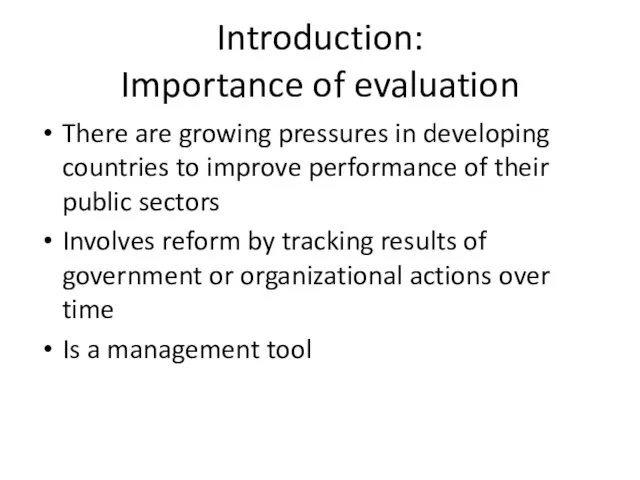
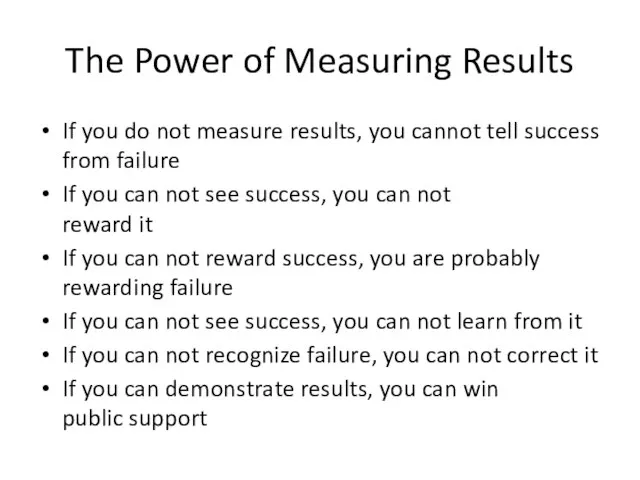
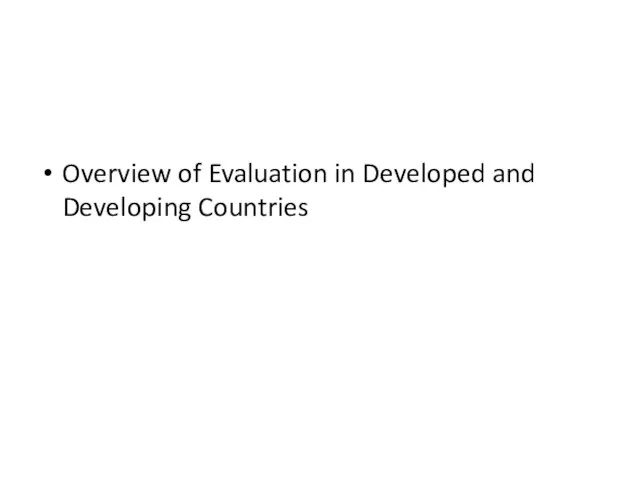

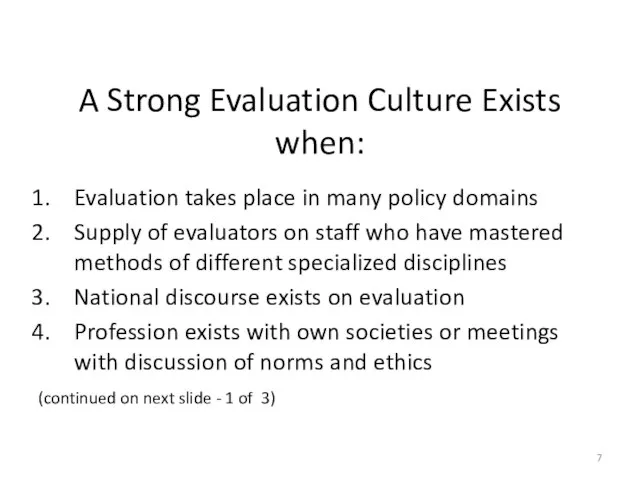

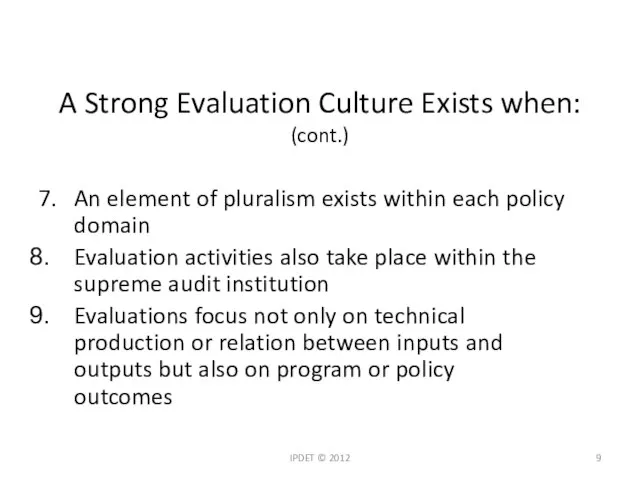


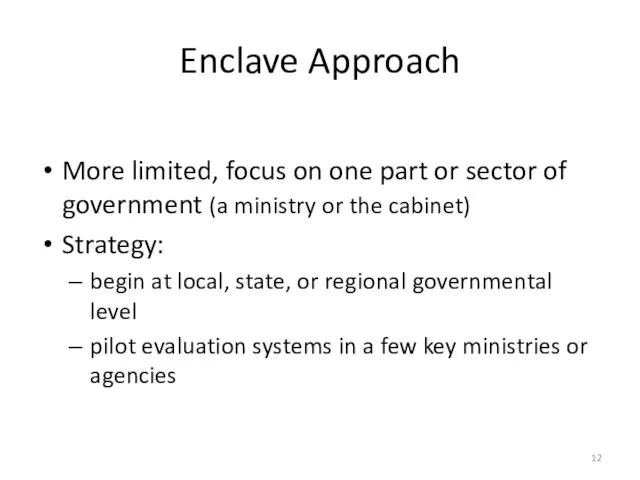
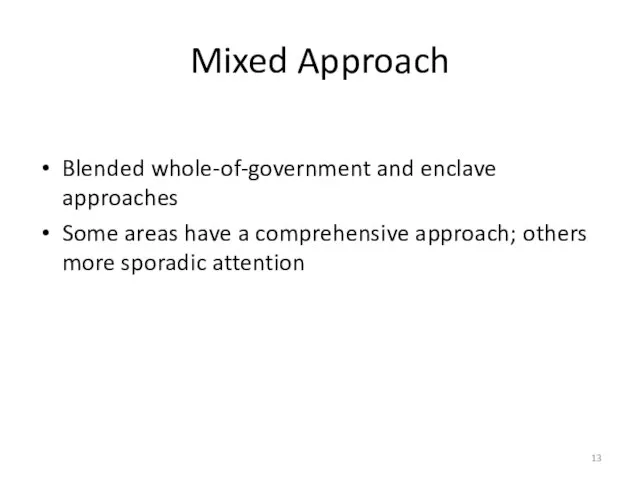
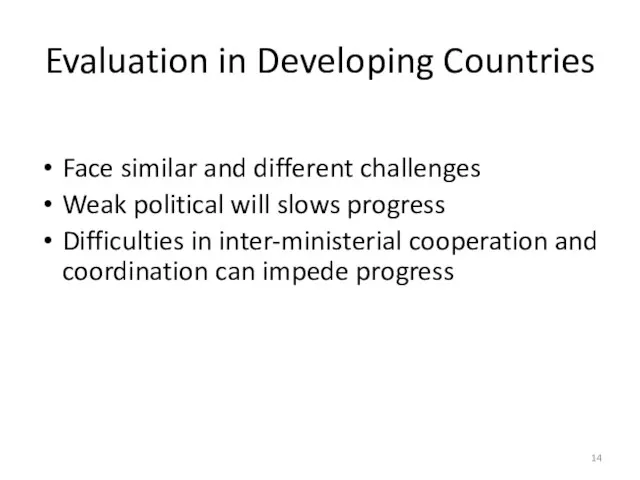
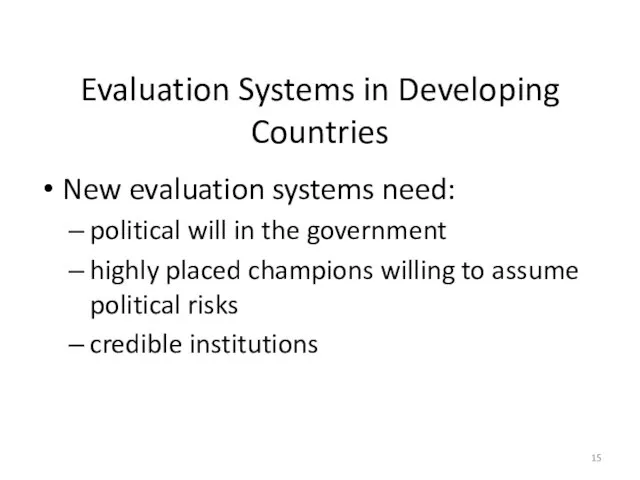
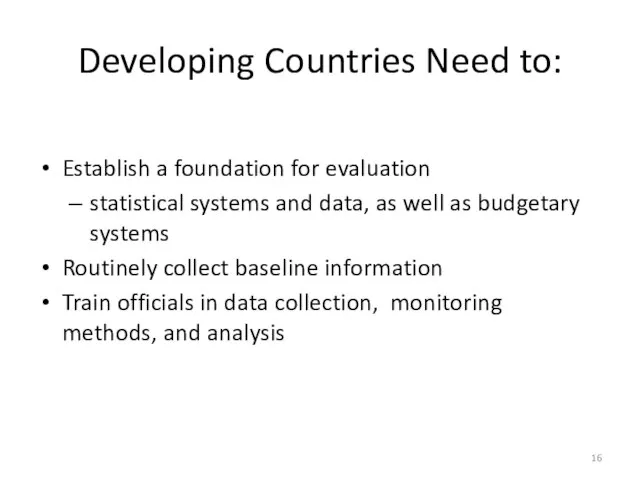
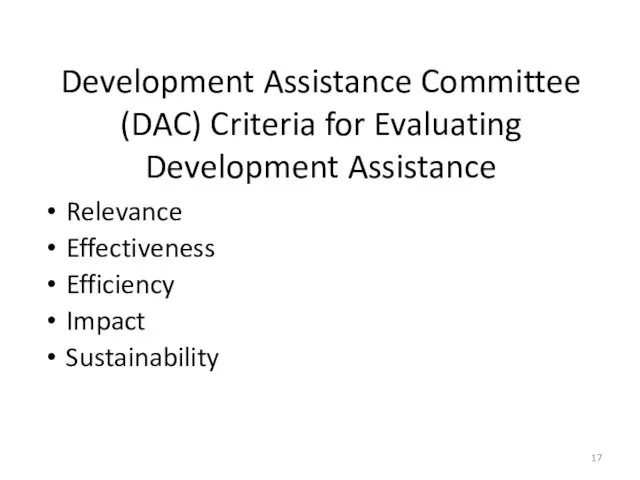

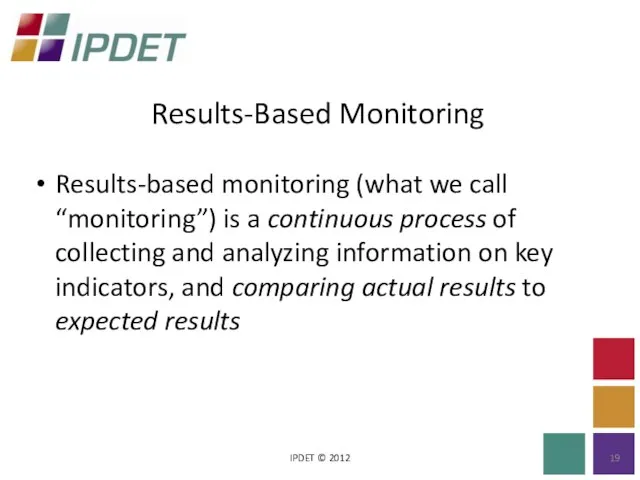
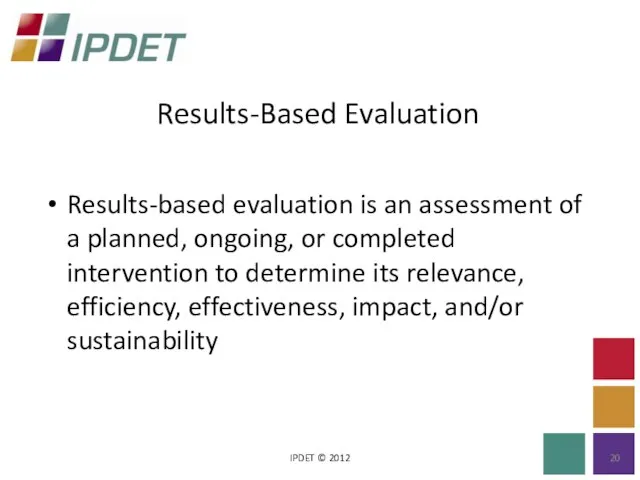
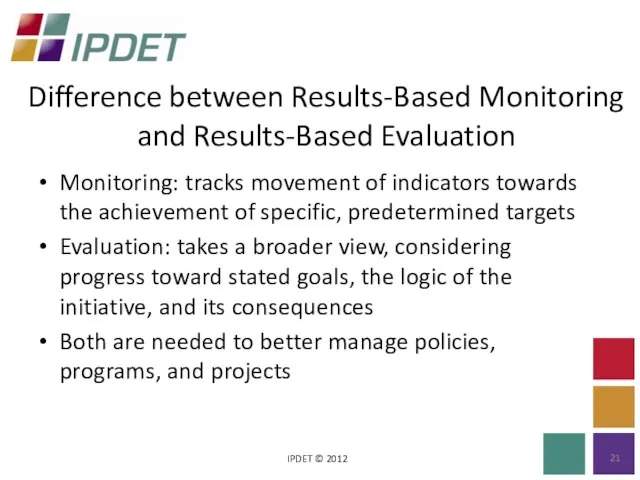
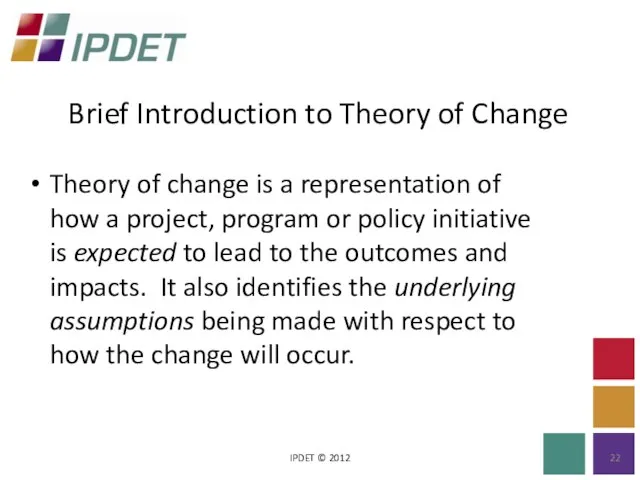
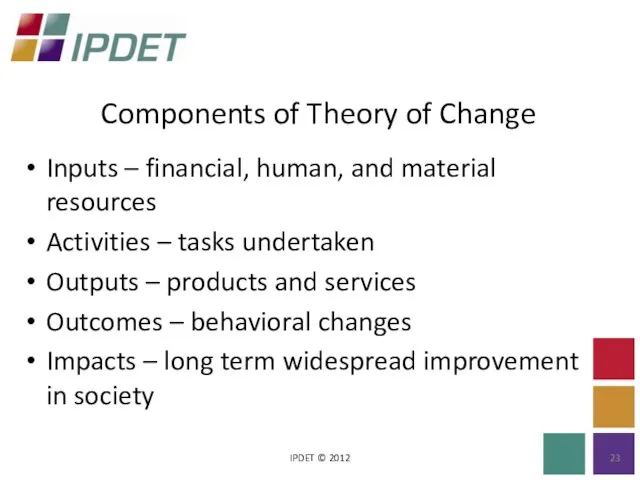
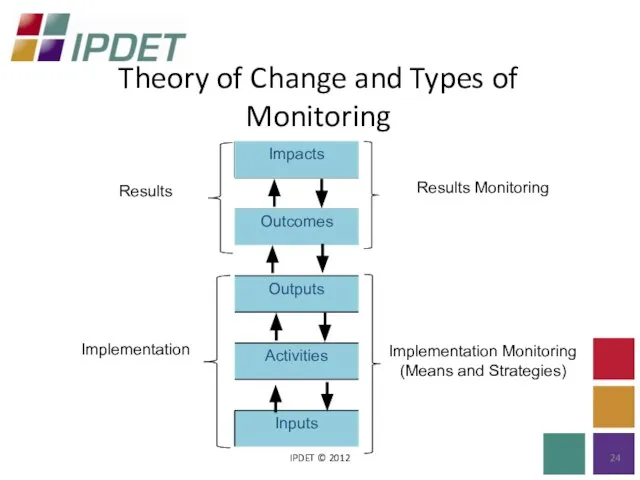
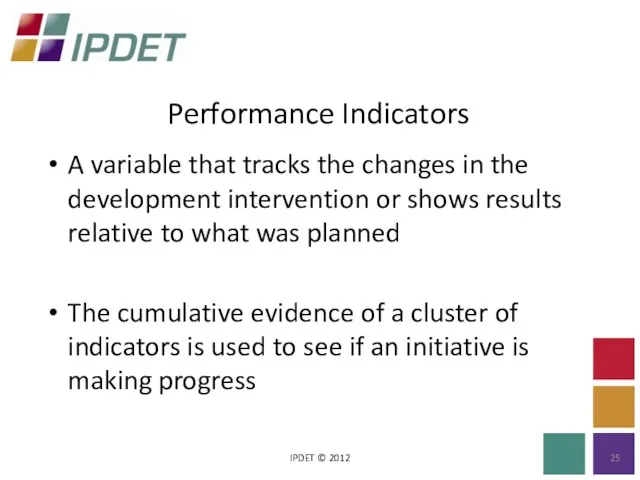

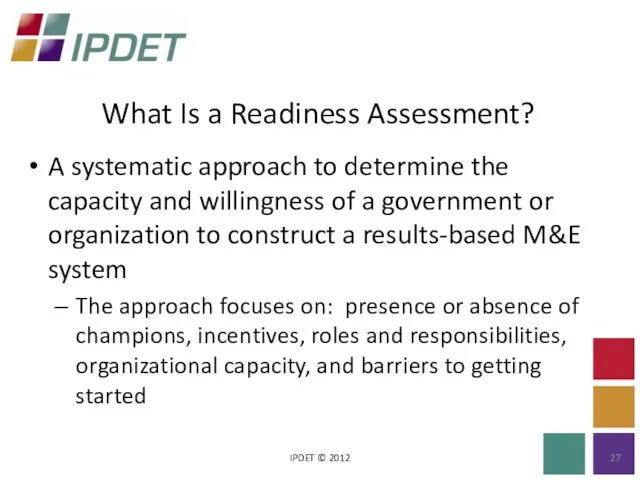
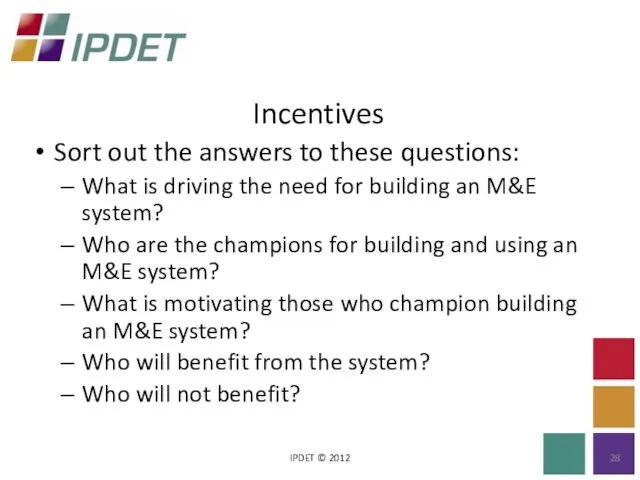
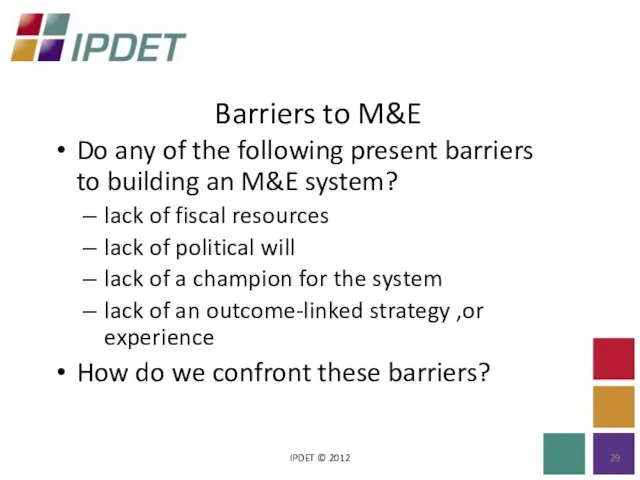

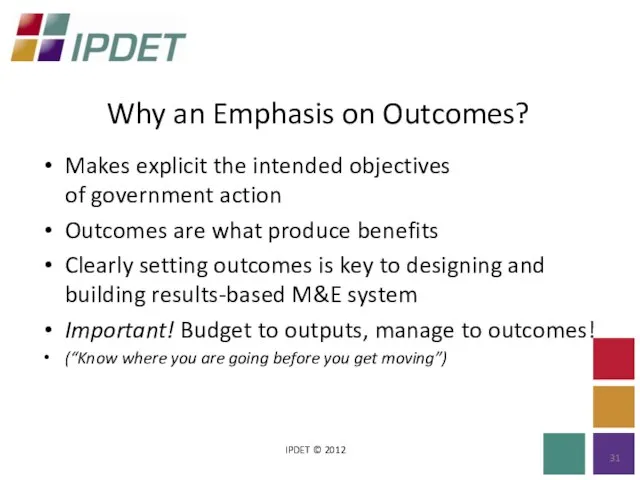
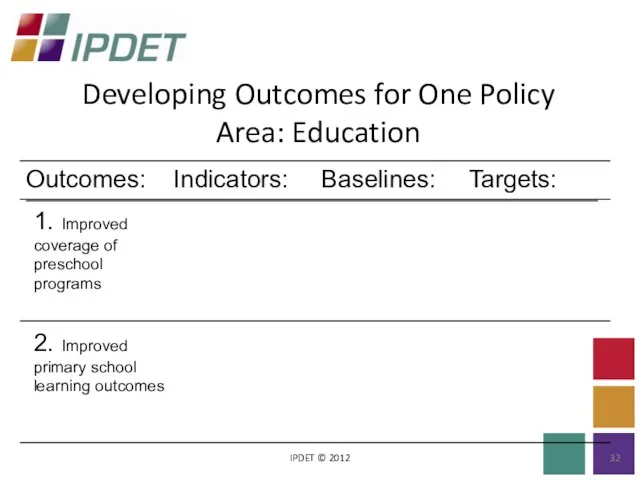
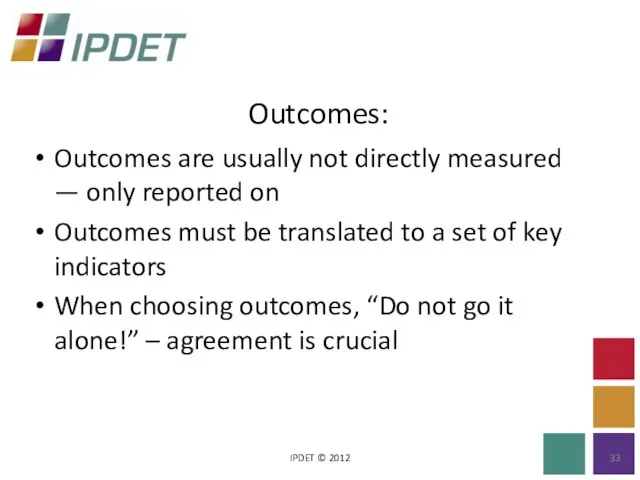
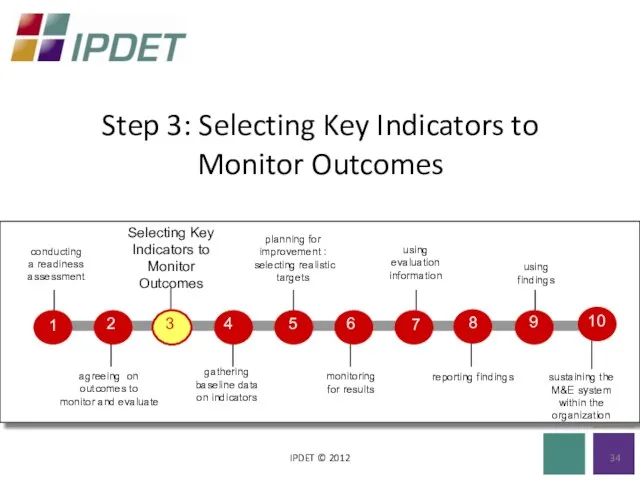
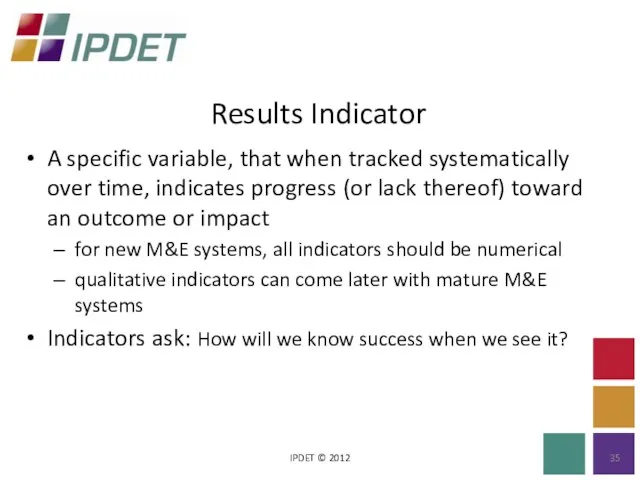
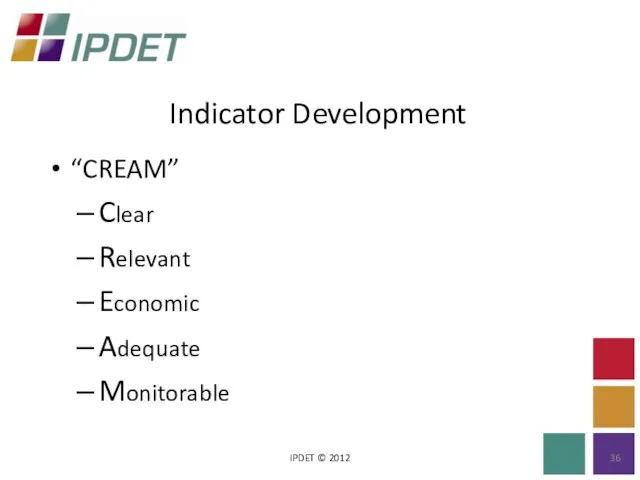
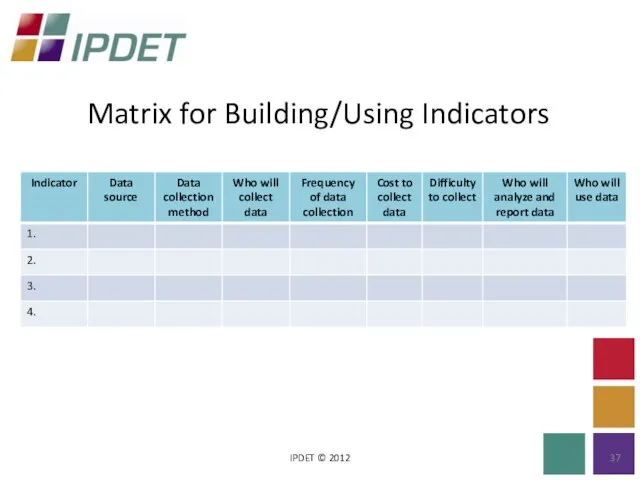
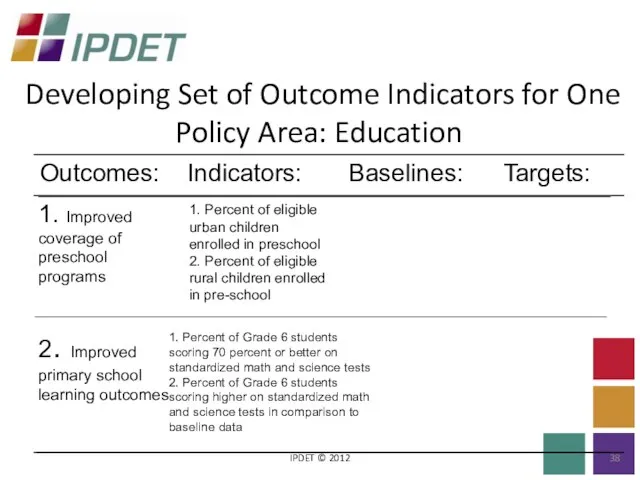
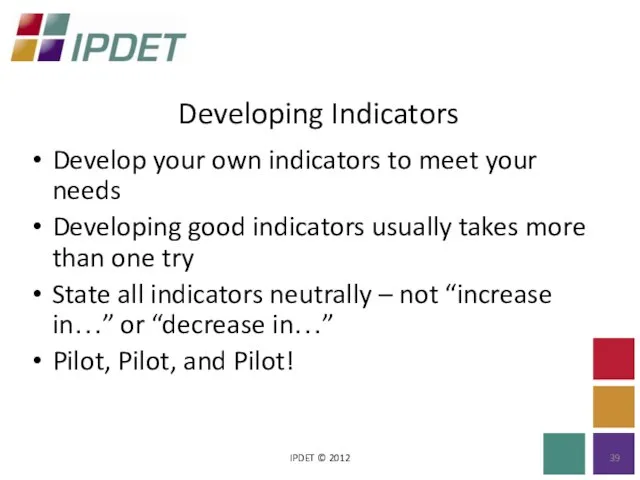
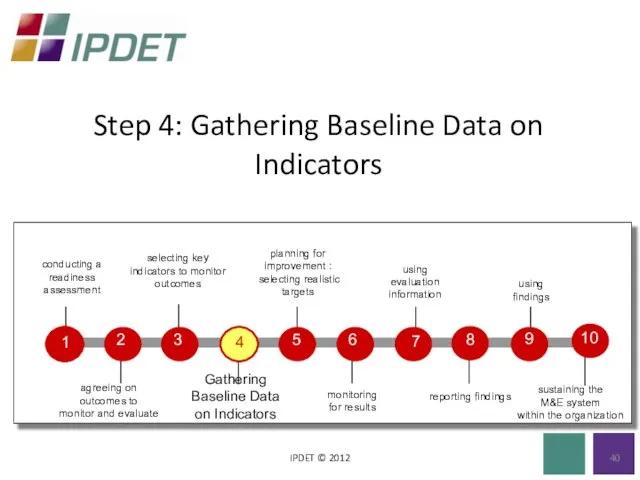
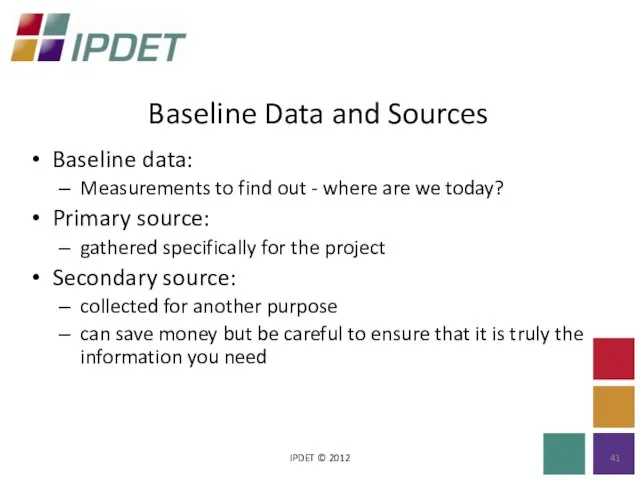

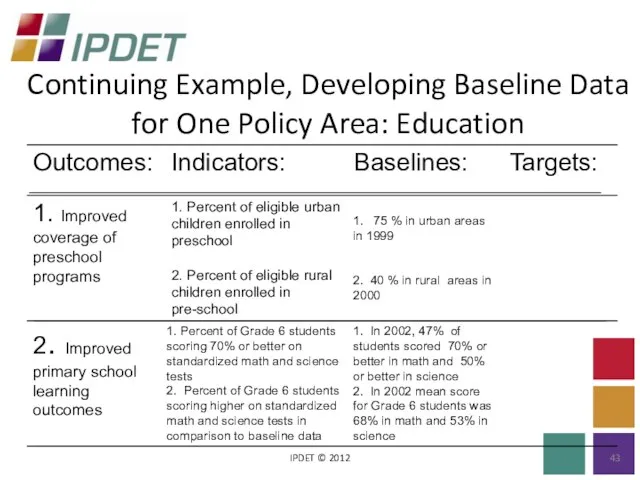
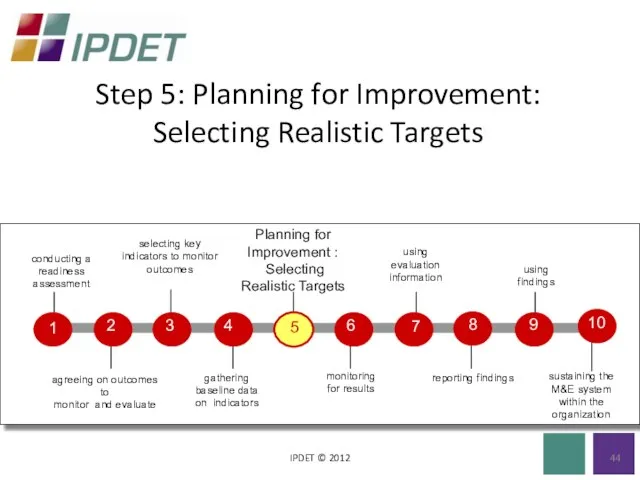
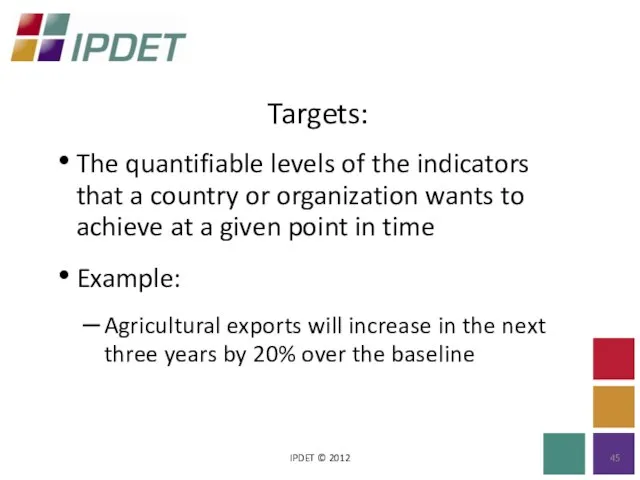
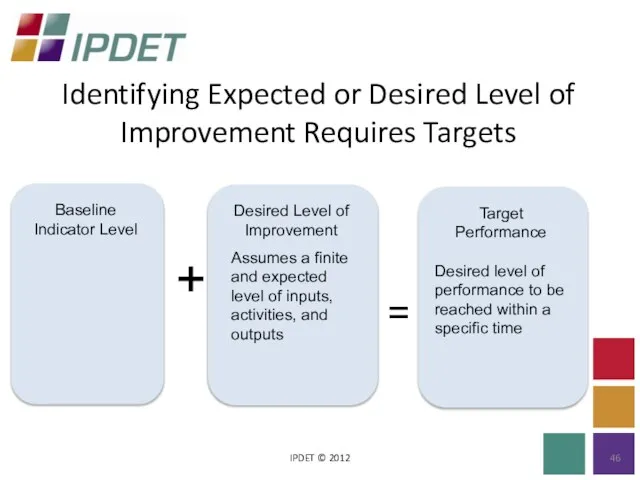
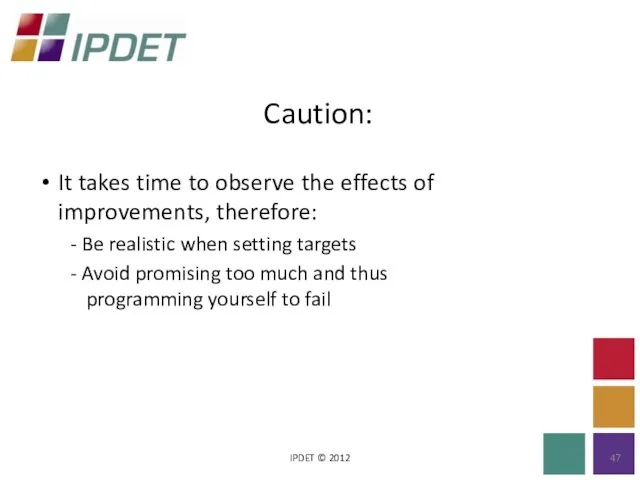
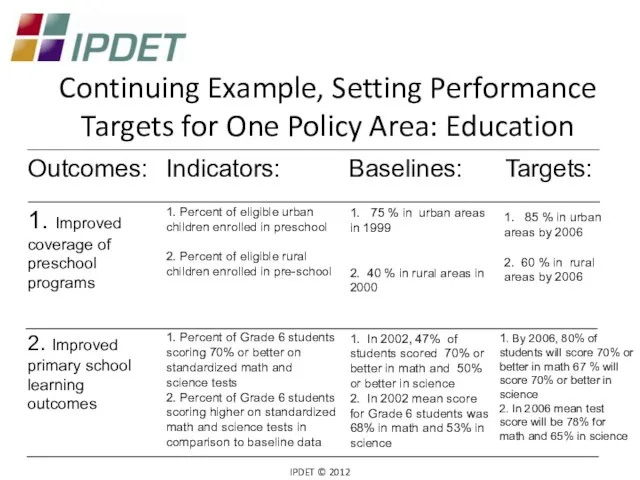
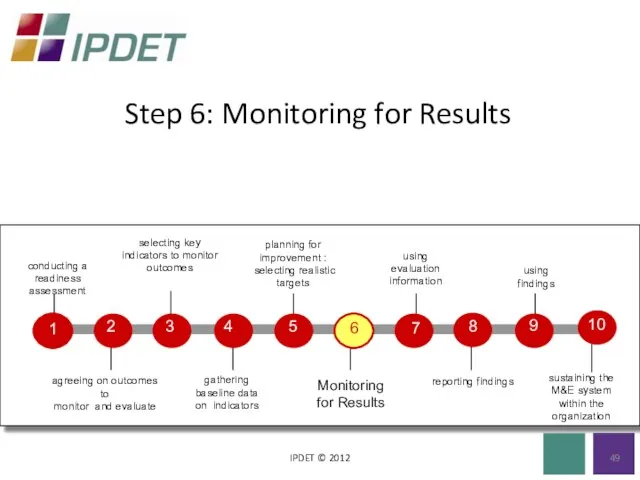
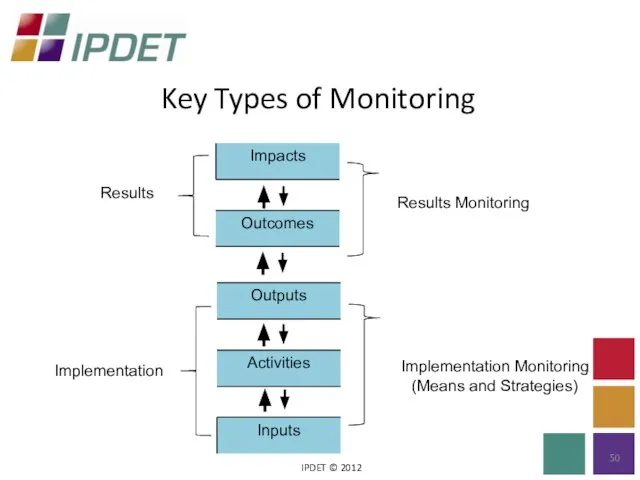

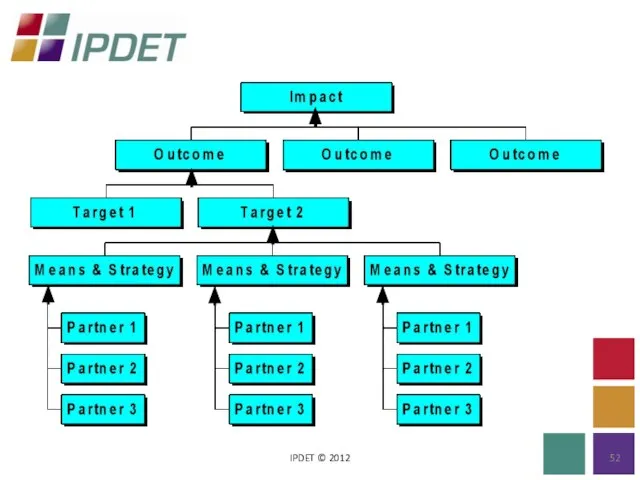
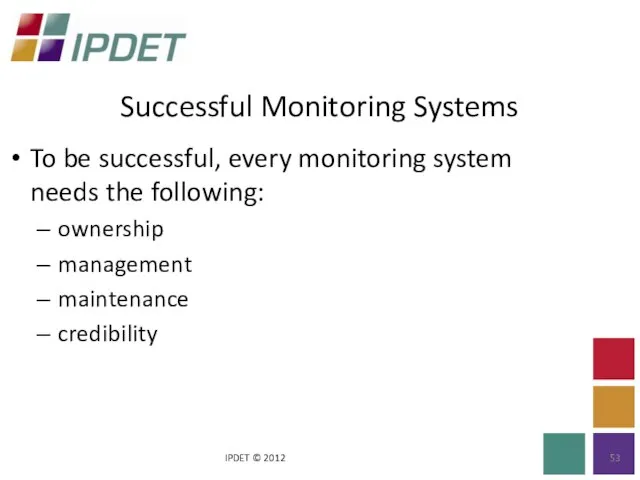
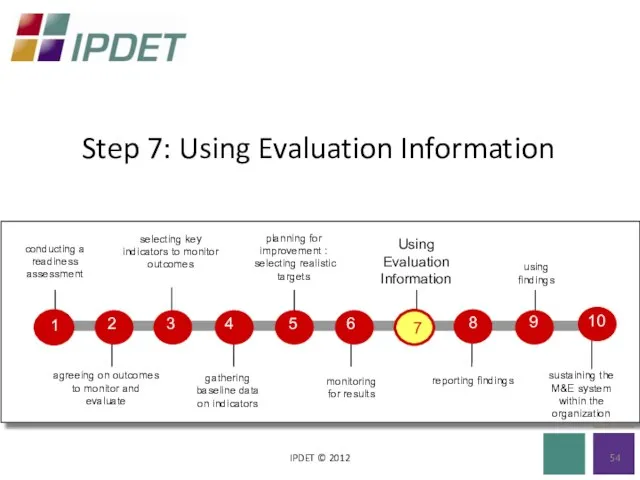
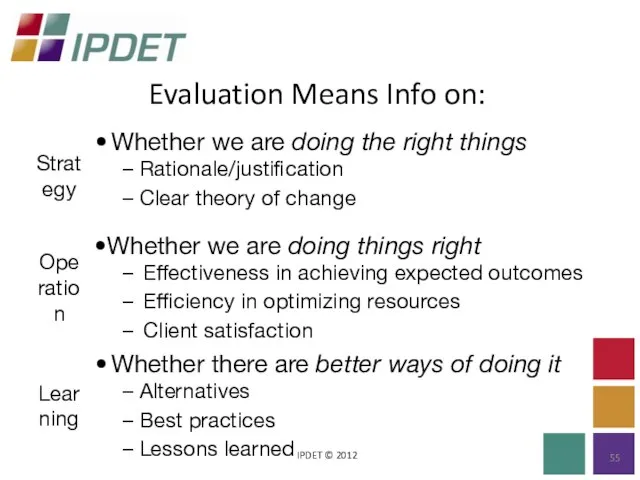
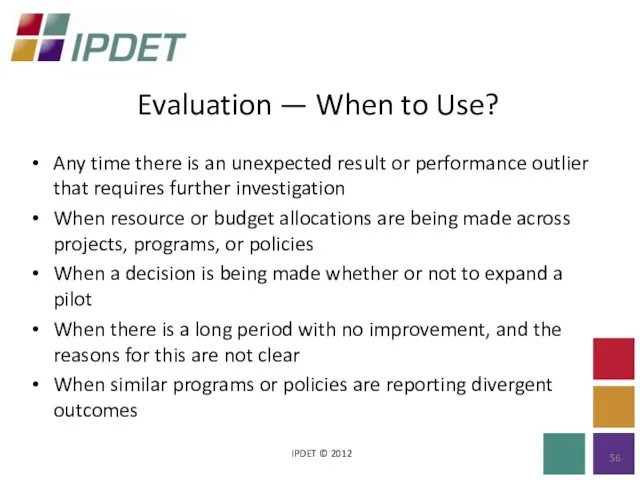
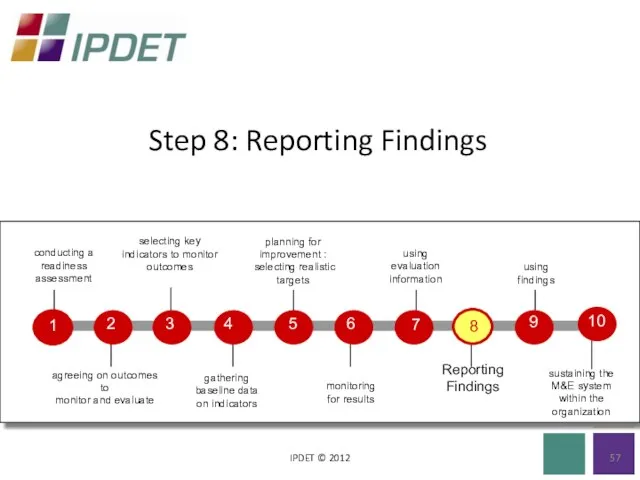
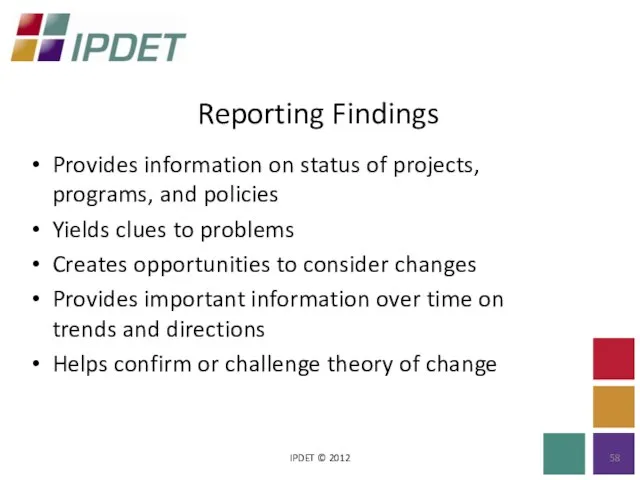


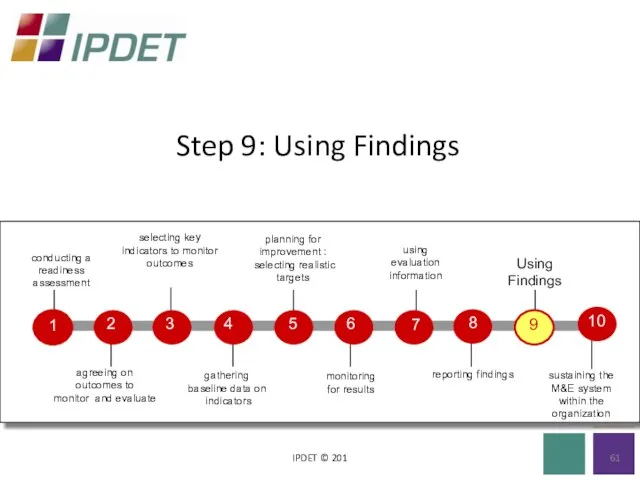

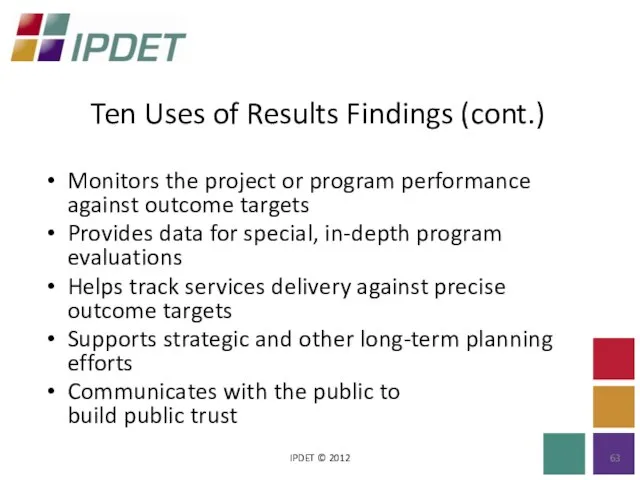


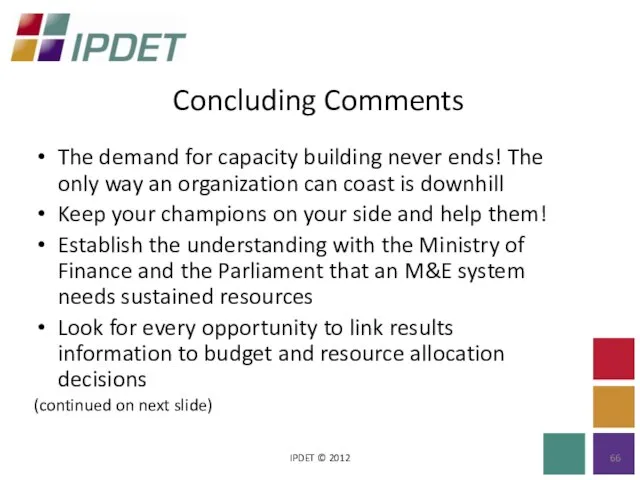
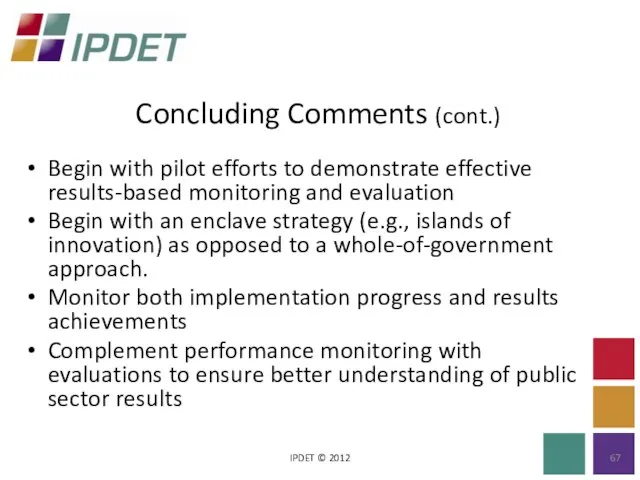
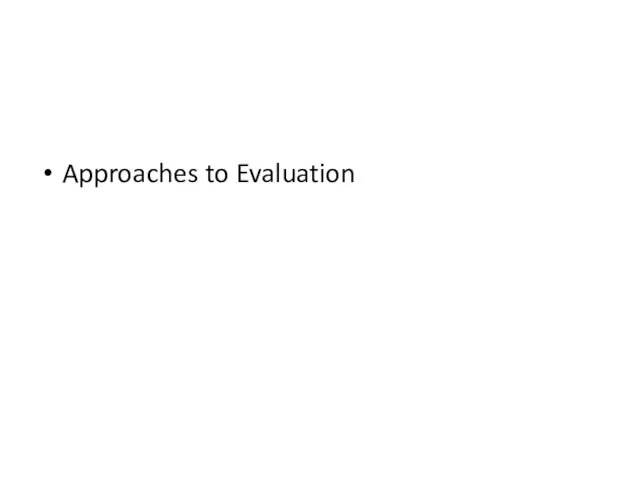


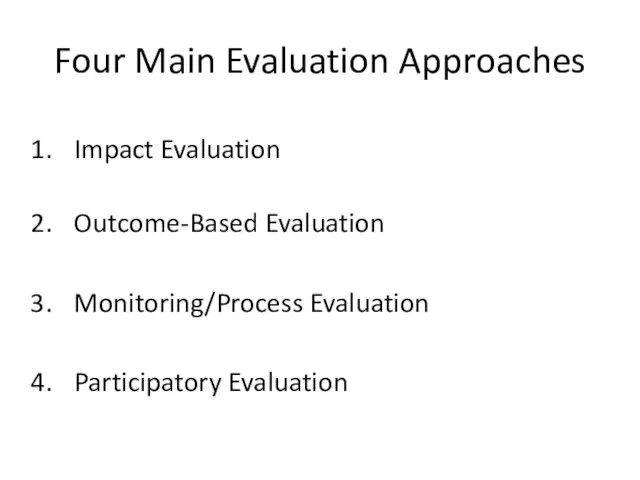
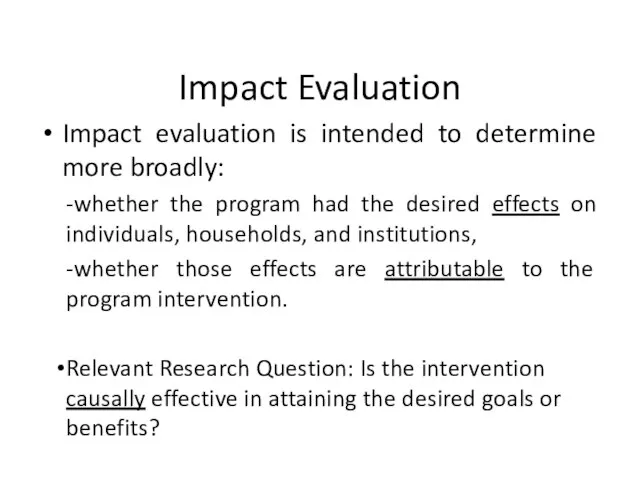
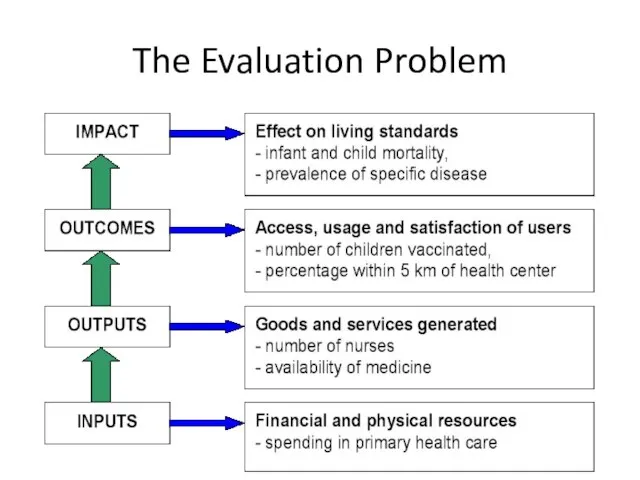
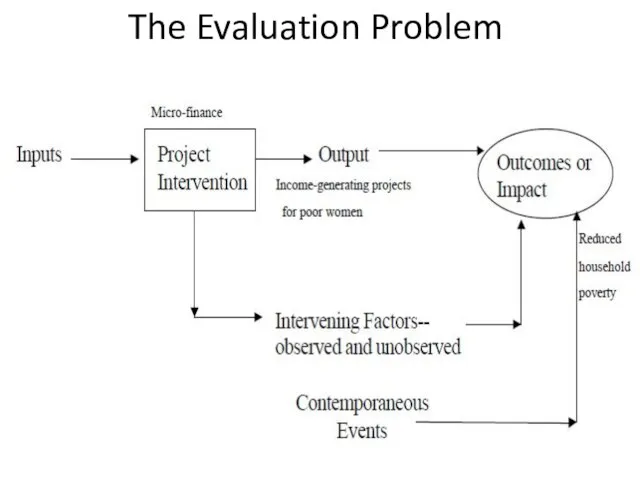
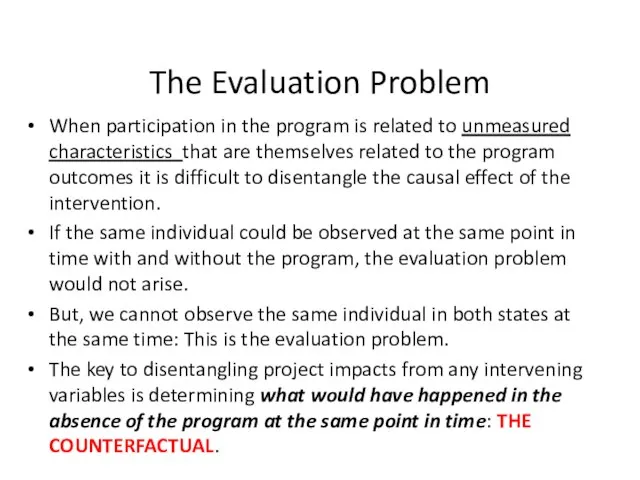
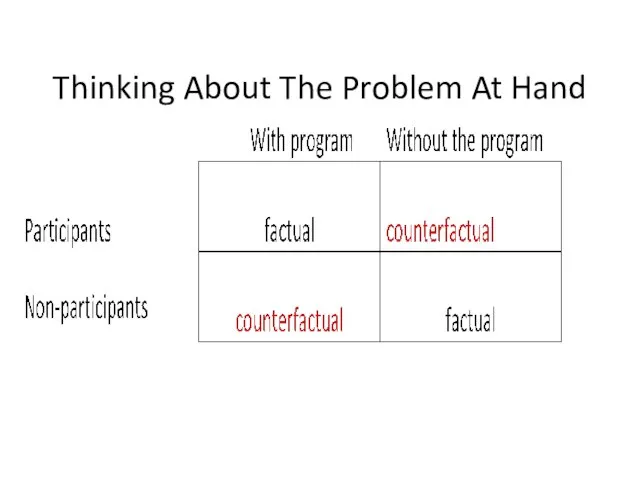

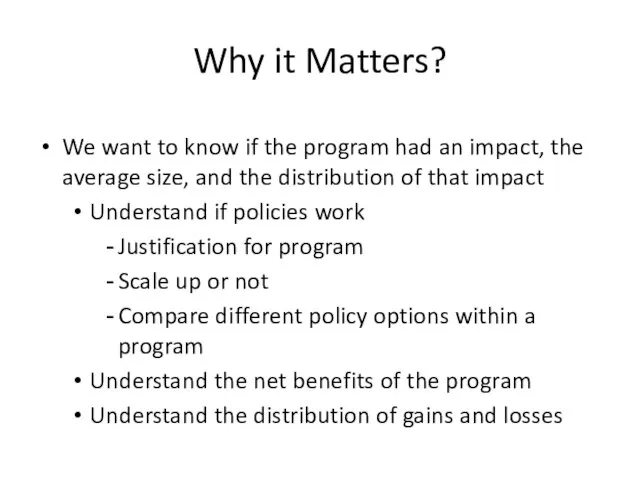
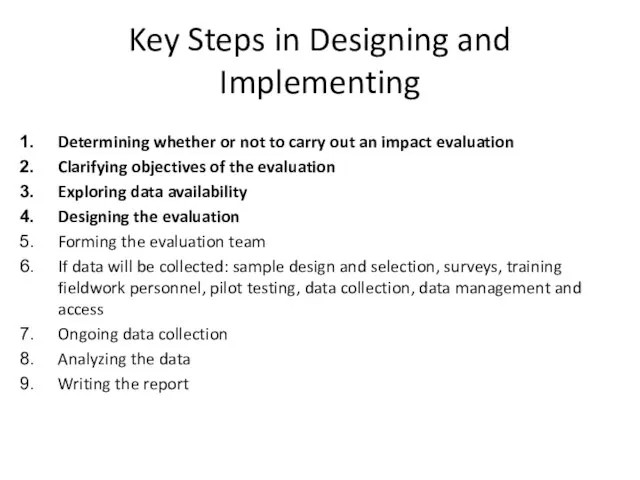
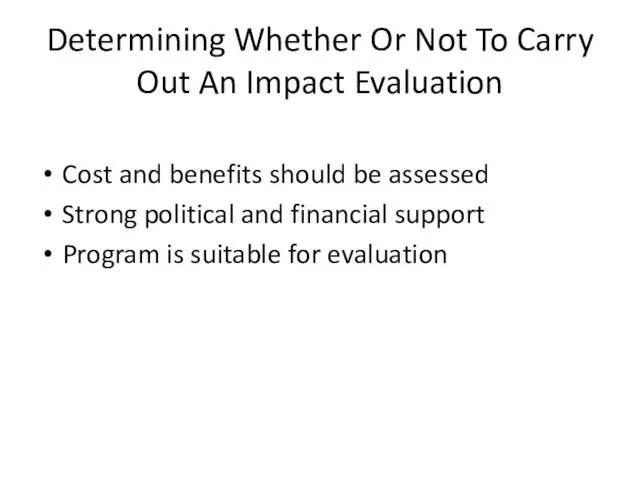

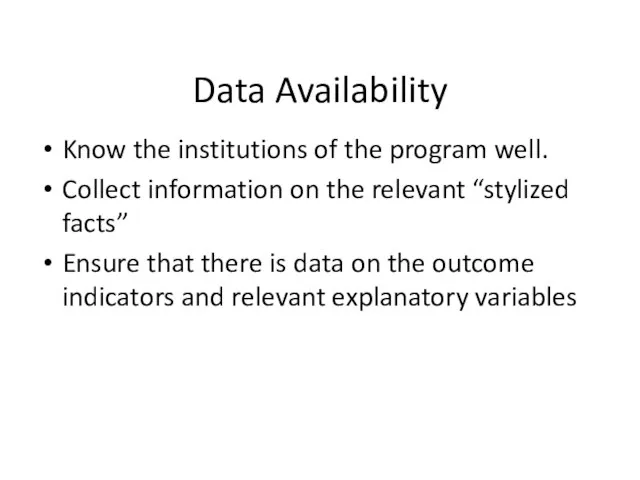
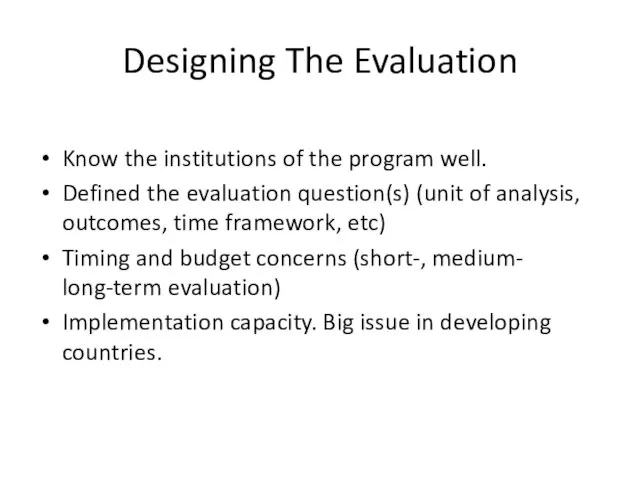
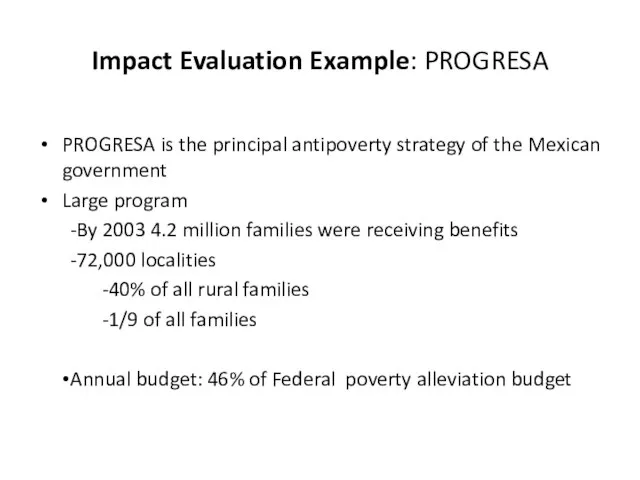

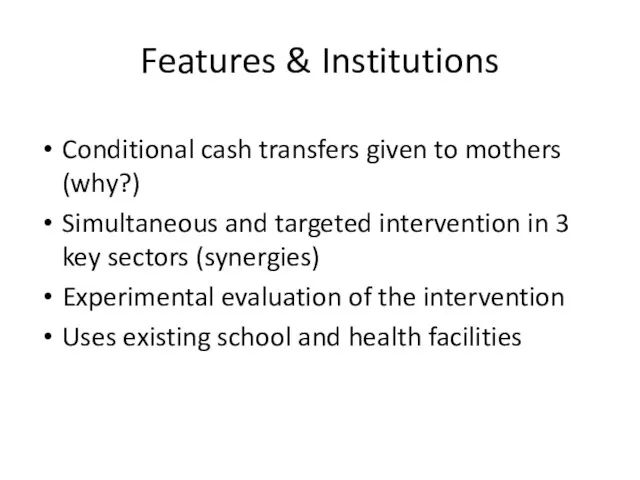

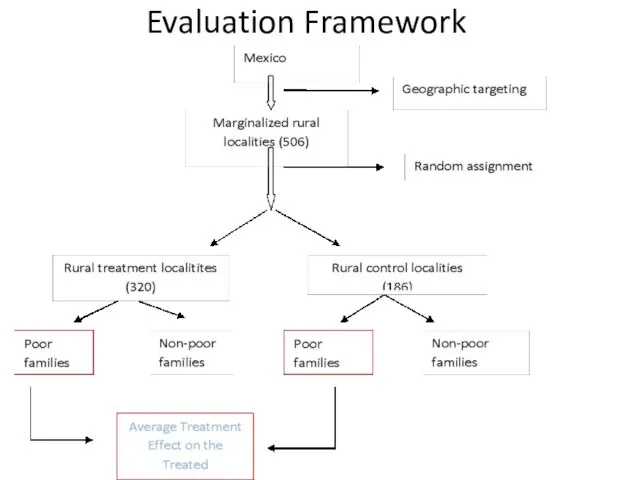
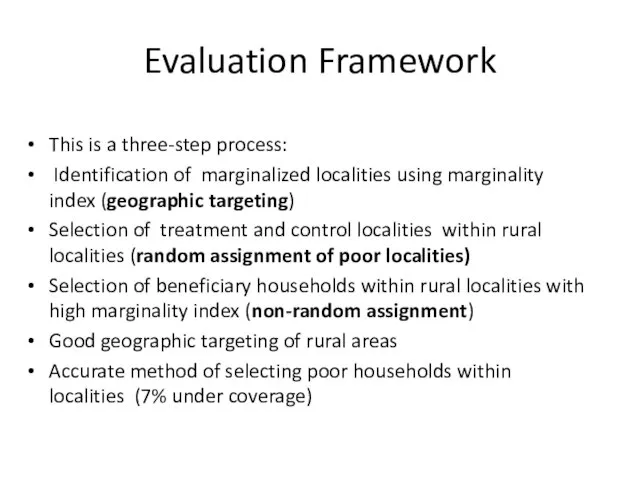
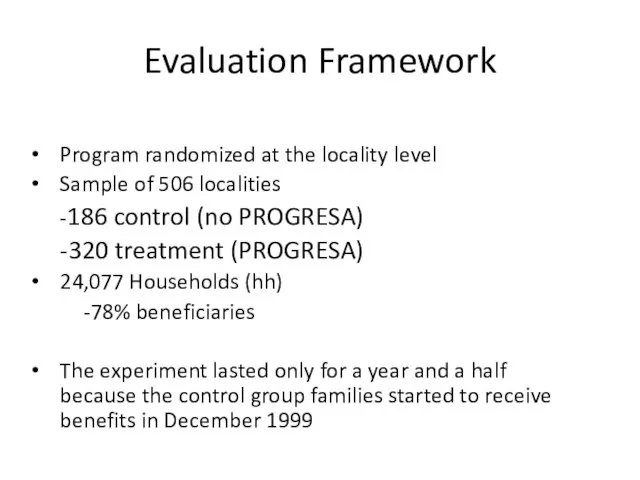

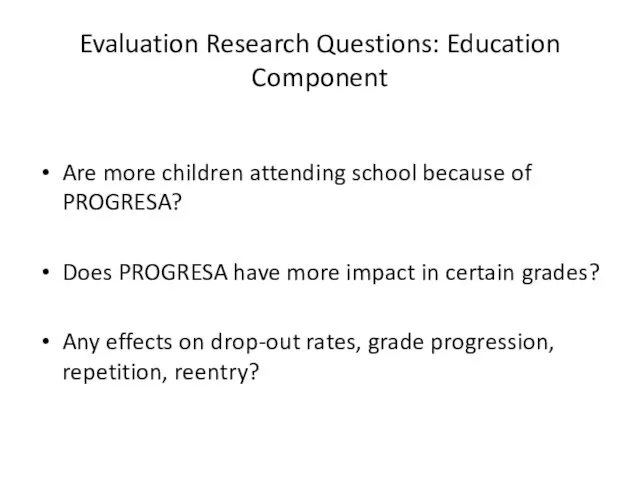
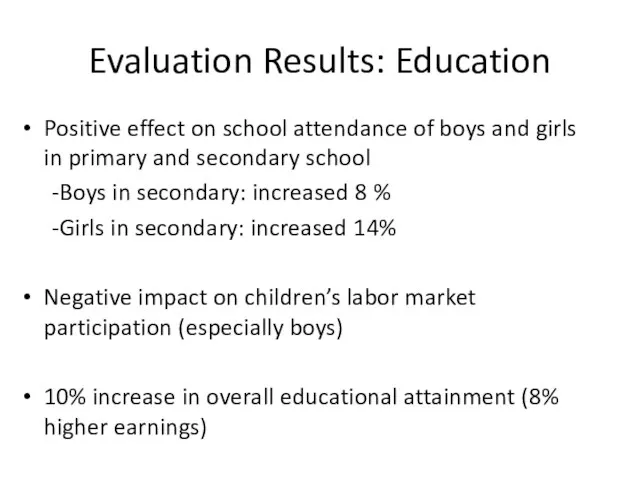
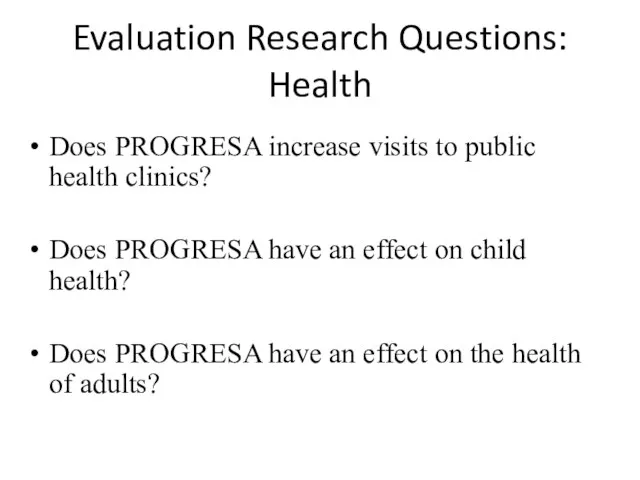
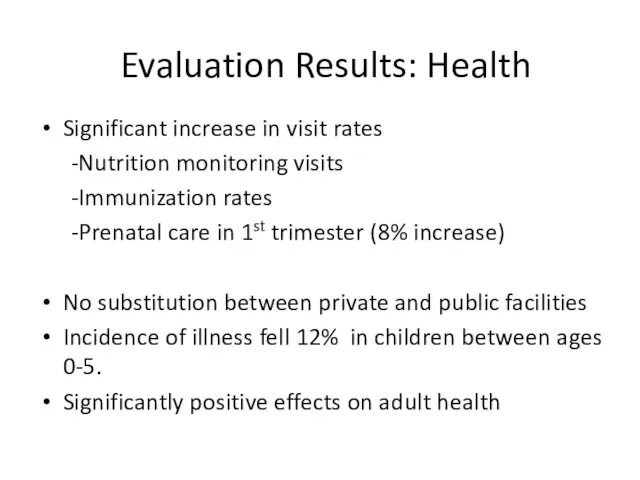

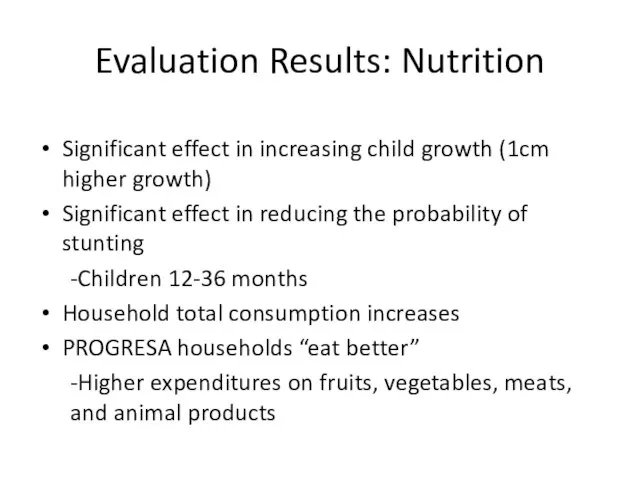


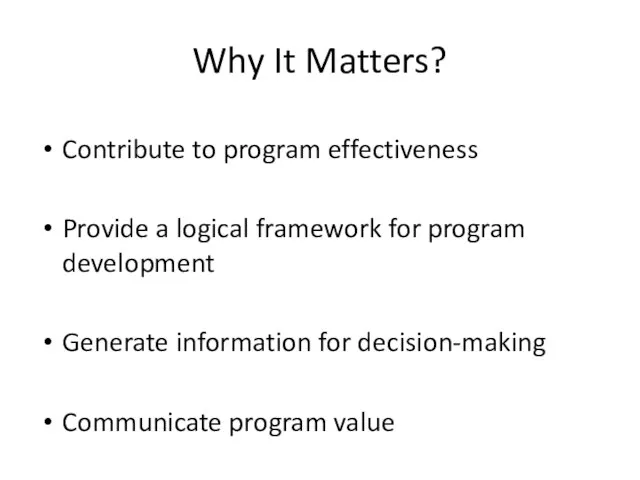

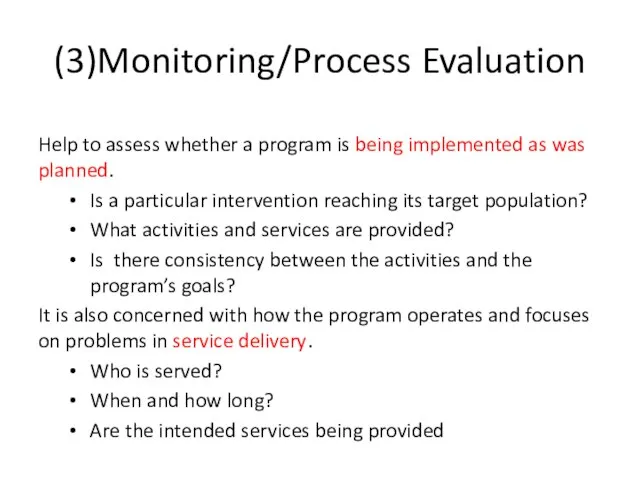
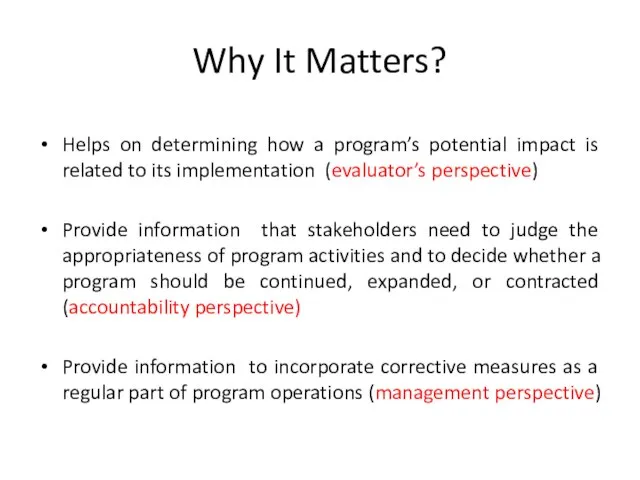
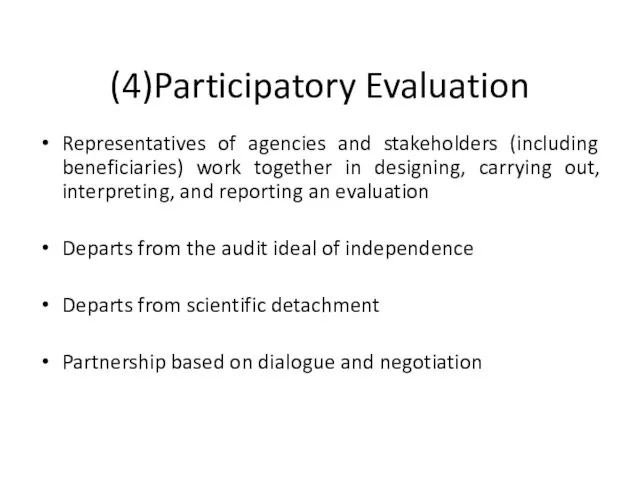

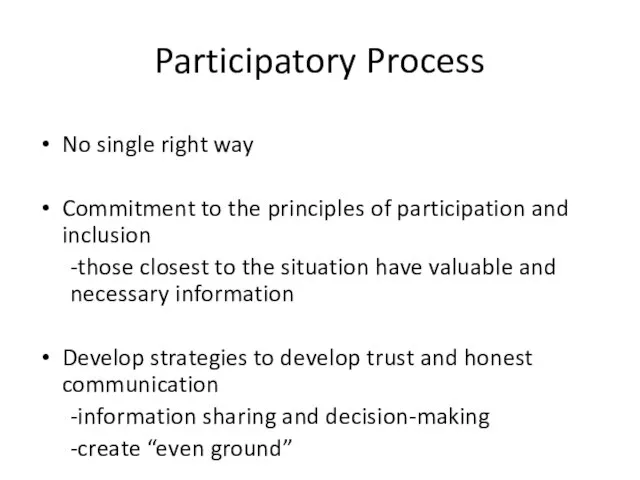
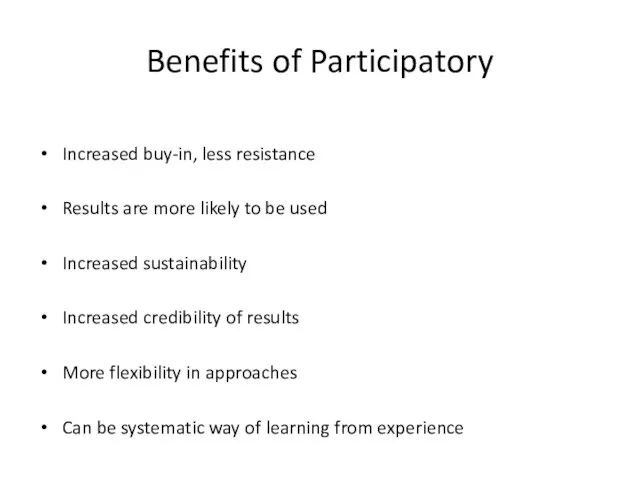
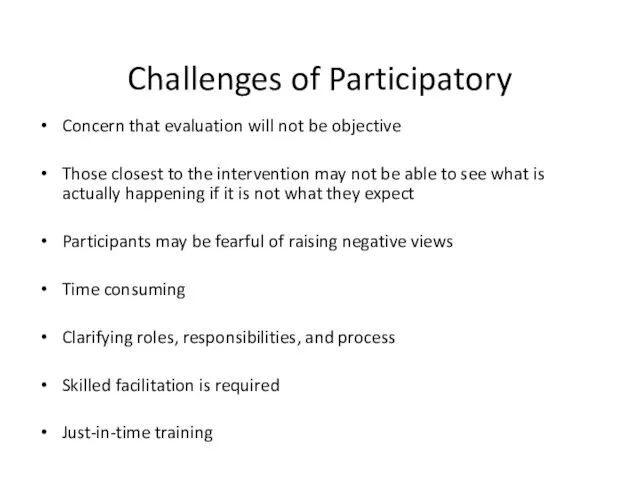
 Презентацию подготовила зам. директора по УВР I ступени - Петрова С.В.
Презентацию подготовила зам. директора по УВР I ступени - Петрова С.В. Общество как группа. Классификация групп
Общество как группа. Классификация групп Комнатные растения в детском саду
Комнатные растения в детском саду Безбедност на децата на интернет
Безбедност на децата на интернет Дополнительные средства гигиены полости рта
Дополнительные средства гигиены полости рта Краски жизни
Краски жизни Понятия и принципы правотворчества
Понятия и принципы правотворчества СИСТЕМА СИНТАКСИЧЕСКОГО ТЕМАТИЧЕСКОГО ПОИСКА В СЕТИ ИНТЕРНЕТ, СИСТЕМАТИЗАЦИИ И ПРЕДСТАВЛЕНИЯ КОНКУРСНЫХ ПРЕДЛОЖЕНИЙ И КОММЕРЧЕС
СИСТЕМА СИНТАКСИЧЕСКОГО ТЕМАТИЧЕСКОГО ПОИСКА В СЕТИ ИНТЕРНЕТ, СИСТЕМАТИЗАЦИИ И ПРЕДСТАВЛЕНИЯ КОНКУРСНЫХ ПРЕДЛОЖЕНИЙ И КОММЕРЧЕС Античный Рим
Античный Рим Л.Л.Павлюк-Павлюченко, В.Н.Узморский Опыт внедрения принципов саморегулирования в Ассоциации клиник пластической хирургии и косм
Л.Л.Павлюк-Павлюченко, В.Н.Узморский Опыт внедрения принципов саморегулирования в Ассоциации клиник пластической хирургии и косм MICROSOFT EXCEL 2010
MICROSOFT EXCEL 2010  Уже с детства человек должен понимать, что он не главное действующее лицо на Земле, а особая, разумная, но все же только часть природ
Уже с детства человек должен понимать, что он не главное действующее лицо на Земле, а особая, разумная, но все же только часть природ Образование и наука
Образование и наука Изучение жаростойкости (окалиностойкости) швов в зависимости от содержания в них хрома
Изучение жаростойкости (окалиностойкости) швов в зависимости от содержания в них хрома Islamic legal system and lebanon legal system
Islamic legal system and lebanon legal system Становление советской культуры:
Становление советской культуры: Физиология бактерий
Физиология бактерий ООО «Инстар Технолоджи»
ООО «Инстар Технолоджи» Отличительные признаки инфантильных сексуальных проявлений
Отличительные признаки инфантильных сексуальных проявлений Рабочий план расширения и интеграции счетов США Дэйл Йоргенсон и Cтивен Ландефельд 12 сентября 2006 г.http://post.economics.harvard.edu/faculty/jorgenson
Рабочий план расширения и интеграции счетов США Дэйл Йоргенсон и Cтивен Ландефельд 12 сентября 2006 г.http://post.economics.harvard.edu/faculty/jorgenson Ознакомление с окружающим миром 1 класс
Ознакомление с окружающим миром 1 класс Английские праздники
Английские праздники Обзор Windows Server 2012 R2
Обзор Windows Server 2012 R2 Доклад об исполнении бюджета Ленинского района города Челябинска
Доклад об исполнении бюджета Ленинского района города Челябинска Золотое сечение в геометрии
Золотое сечение в геометрии Секция «Проектирование учебного плана и программ дисциплин в области начального образования
Секция «Проектирование учебного плана и программ дисциплин в области начального образования История разработки форматов электронных сообщений на российском финансовом рынке.
История разработки форматов электронных сообщений на российском финансовом рынке. Презентация на тему Комплексная программа развития и воспитания дошкольников в Образовательной системе "Школа 2100"
Презентация на тему Комплексная программа развития и воспитания дошкольников в Образовательной системе "Школа 2100"